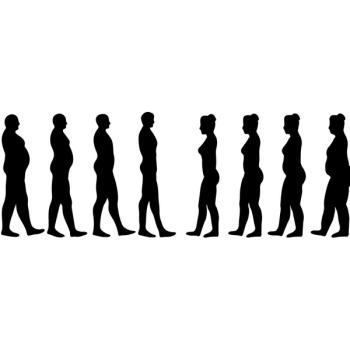
Young Woman in Vibrant Good Health
A healthy 33-year-old woman is seen in the office of her primary careclinician.
This article was originally presented as an independent educational activity under the direction of CME LLC. The ability to receive CME credits has expired. The article is now presented here for your reference. CME LLC is no longer responsible for the presentation of the article.
HISTORY
A healthy 33-year-old woman is seen in the office of her primary care clinician.
PHYSICAL EXAMINATION
Comfortable normotensive woman who has had easy fatigability just for a short time.
WHAT'S YOUR DIAGNOSIS?
ANSWER: NORMAL PREGNANCY
This case should not represent a diagnostic puzzle even without our specifying that she missed 2 menstrual periods and had been trying to conceive. The history and demographics accord with recognition that pregnancy must be considered in any choice of testing, and specifically in regard to imaging and to any drug therapy, even if pregnancy is not the diagnosis in question. This woman’s breasts show an early physical sign of her pregnancy: increased vascularity compared with baseline (Figures 1 and 2). We do not yet recognize even the very beginning of increased abdominal girth as a further corroborating sign (Figure 3).
COLOR CHANGE: MUCOSAE
In the search for confirmatory physical signs of pregnancy over the years prior to laboratory testing,1 many characteristics of the gravid uterus were described. Some sound as though they were extremely unpleasant and uncomfortable for the patient, such as “flexibility at the junction of the corpus and the cervix,” and have rightly fallen into obscurity. Others may be highly examinerdependent, such as palpation of uterine artery pulsations in the lateral fornices.2-4
Still others have reflected presumably vascular changes in the squamous mucosa and skin of cervix, vagina, and vulva. The most prominent and enduring of this group is Jacquemin sign5 (often known as Chadwick sign), a blue-purple discoloration of the cervix but not the corpus uteri; the sign occurs commonly in early pregnancy (Figure 4). The precise basis of this sign may include both increased blood flow and increased oxygen extraction from the tissue. Why this phenomenon would occur in the vagina and vulva, that presumably do not have an increased metabolic burden especially early in pregnancy, remains unsolved; likewise why the endometrium, which should be more metabolically active than any other reproductive tissue, does not become blue.
CHANGES OVER THE COURSE OF PREGNANCY
Sequential enlargement of the abdomen and often of the breasts is familiar to most human beings and not just those who are health care workers. We were presented a unique opportunity to document these serially on an every-4-weeks’ basis from the time of the photos shown above, through delivery at term, and postpartum (Figures 5 through 23). A uniquely skilled professional medical photographer took images of this normal, healthy pregnancy with extreme attention to consistent lighting, color, and placement.
We made sure to include studies of gingiva and facies as well as of body contours. It was only on retrospective side-by-side review of the images that we saw that in fact some gingival swelling did occur later in the pregnancy (
The kind of “high-riding abdomen” seen in this woman (Figure 12) has been a subject of many folk predictions about baby gender. Usually the force of the opinions expressed about gender based on this sign is inversely proportional to the evidence of empirical accuracy, let alone scientific basis, at or near term. The same shape is sometimes adduced as evidence that a pregnancy is a woman’s first, as though the abdominal wall and/or viscera become irreversibly stretched.
COLOR CHANGE: SKIN
The areolae enlarged and darkened from an early point in the pregnancy (compare
By the last trimester this woman developed a slight darkening of the midline of the abdomen (
Though she breast-fed this infant for a year, by an early point postpartum (
DOES LABORATORY EVALUATION MAKE ALL THIS OBSOLETE?
The history alone is clearly inadequate for diagnosis and perhaps even more important, for exclusion of pregnancy: in one study, fully 10% of women of childbearing age who were seen for gynecological symptoms in an emergency department setting, and who replied to a questionnaire “there is no chance I could possibly be pregnant,” had a positive pregnancy test.6
Nobody would advocate abandoning the use of both urine and blood tests for the beta subunit of human chorionic gonadotropin (HCG) and returning to a time when a firm diagnosis of pregnancy needed to be deferred agonizingly long for the patient who either deeply desired a pregnancy, or wished not to be pregnant.7
Experience in multiple domains shows the ingenuity of the tiny subset of people who wish to mimic a condition including pregnancy. Bloodwork is another barrier against misconstruing a pseudocyesis.
However, the clinician who recalls the physical signs is in the favorable position of being able to predict with appropriate confidence pending laboratory results; or to better counsel, if only as a preliminary, a terrified woman or girl who asks the question and fears creating a “discoverable” record; or for whom even the cost of a urine test is a hardship to be undertaken only after the pre-test probability can be aptly enhanced by clinical skill; or in any of the many places on earth where laboratory support is unavailable or too costly. We can too easily forget that there are many nations where per capita gross national product is less than a dollar a day.
HAPPY OUTCOME
The pregnancy went smoothly even when the gravid uterus pressed against the inferior vena cava, leading to a bit of leg edema (
Words are insufficient to thank the extraordinary woman who participated in this project and whose bond with her first child we are delighted to celebrate in this column. Both mother and baby.now a nearly-grown-up adolescent.are doing fine all these years afterward.
Schneiderman H, Esstman E. Normal pregnancy: the most joyous physical signs on earth. CONSULTANT. 2009;49: 633-646.
References:
REFERENCES:
1. Hibbard BM. Pregnancy diagnosis.
Br Med J
. 1971;1(5749):593-595.
2. Meeks GR, Cesare CD, Bates GW. Palpable uterine artery pulsation as aclinical indicator of early pregnancy.
J Reprod Med
. 1995;40:194-196.
3. Sloves RB. Palpable uterine artery pulsation as a clinical indicator of earlypregnancy [letter].
J Reprod Med
. 1996;41:780.
4. Meeks GR. Palpable uterine artery pulsation as a clinical indicator of earlypregnancy [letter in reply].
J Reprod Med
. 1996;41:780.
5. Gleichert JE. Etienne Joseph Jacquemin, discoverer of “Chadwick’s sign.”
J Hist Med Allied Sci
. 1971;26:75-80.
6. Ramoska EA, Sacchetti AD, Nepp M. Reliability of patient history in determiningthe possibility of pregnancy.
Ann Emerg Med
. 1989;18:87-89.
7. Bastian LA, Piscitelli JT. Is this patient pregnant? Can you reliably rule in orrule out early pregnancy by clinical examination?
JAMA
. 1997;278:586-591.
8. Uwaifo O, Uwaifo G, Schneiderman H. Idiopathic striae of adolescence.
Consultant
. 2000;40:1683-1685.
Newsletter
Enhance your clinical practice with the Patient Care newsletter, offering the latest evidence-based guidelines, diagnostic insights, and treatment strategies for primary care physicians.
















































































































































































































































































